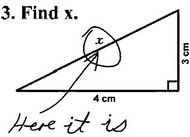Problems for pushcart vendors in the 21st century.
Contending with Vending: Trials and Tales of Pushcart Warriors
by Benjamin Galynker
You’ve seen the pictures: Hester Street, or maybe Orchard, teeming with vendors hawking food and bric-a-brac; the flashback in "The Godfather, Part II," where young Vito Corleone, fresh off the boat, walks past an old man, mule-like, pulling his wooden fruit cart behind him...
In 1920, seventy-five percent of the vendors in New York City were Jewish, and another 20 percent were Italian.
Today there are almost no Jews and Italians, but plenty of Senegalese, Bangladeshi, Chinese, and Egyptians.
Some vendors "graduate" to being taxi drivers when their English becomes good enough and others dream of one day "opening up a store or something."
The vending life improves as a vendor gains regular customers and saves enough money to buy her own cart... and works up to the more prominent and lucrative locations.
Sidewalk real estate is a hot market and demands from vendors long-term strategizing and extraordinary patience.
The unreasonable 1920s prohibition on parking one’s cart was challenged by four enterprising Eastern-European Jewish pushcart vendors who joined forces and flouted the peddling laws, in the first documented vendor rebellion. They rolled their carts off the sidewalk and parked on Hester Street proper, right in the middle of the bustling Lower East Side thoroughfare. They became the first bona fide street vendors and hundreds more followed suit.
The reign of the street vendors ended abruptly, after Napoleonic Mayor LaGuardia, who served from 1934 to 1945, ordered them into indoor markets at the urging of the shopkeepers, who saw the vendors as unfair competition. After a short while, though, the very shopkeepers who despised the vendors lost so much business as a result of their dispersal that they pleaded, unsuccessfully, with LaGuardia for the vendors’ return.
In the decades after the LaGuardia fiasco, the City Council and its administrative agencies produced a patchwork of laws that systematized—and stigmatized—vendors.
The new laws were difficult for even a legally savvy citizen to follow, and they were equally difficult to enforce in a non-biased way.
For many years, police officers continued to drag vendors into the criminal courts to levy fines against them for standing still, even after stationary vending became commonplace and pushcart peddling became rare.
Consider the seemingly straightforward task of finding a "legal spot" on which to build your vending business. Let’s say your handmade jewelry business fits on a one-foot-by-one-foot square table and you plan to staff it from a one-foot-by-one-foot stool. When you try to apply for a general -- as opposed to food—vending -- license, you find that there are no licenses to be had -- the City Council froze the number of licenses at 853 in 1979, and you can’t even get on the waiting list because it’s so long.
To make matters worse, even if you could get a license, you wouldn’t be able to open your two-square-foot business anywhere in the 280-square-block area of midtown Manhattan.
Since you can’t sell your jewelry, let’s say that you become the proud owner of a burrito grilling cart, eight feet long and three feet wide. Now let’s assume that the city, in its infinite wisdom, enters into a contract with a business improvement program, as it often does, to place designer plants and artistic trash baskets at 7.5 foot intervals throughout the midtown neighborhood where your customers work. This time, you are able to get a license to vend food fairly easily, since there is no limit to those licenses, but you can’t get a permit for your cart.
For argument’s sake, though, let’s just say you somehow entered the lottery and got a permit. Unlike your failed jewelry business, this burrito cart takes up quite a bit of space. And since the only lucrative spots are at intersections, that’s where you want to be.
While food vendors deal with physical spots, regulations deal with arbitrary distances from objects whose layout changes with every street. In effect, the regulations nearly outlaw doing business anywhere near an intersection. They require that vendors be on a sidewalk at least 12 feet wide, at least 10 feet from any crosswalk and subway, at least 20 feet from any entrance, and not "within a bus stop."
The problem with these rules is that they are not actually graphed out on a street map, so neither vendors nor police officers know which spots are legal. If you walk the streets of Manhattan, you will see a handful of vendors who have been working for ten years and have found the Holy Grail—a corner spot that meets all the city’s regulations.
But the coveted spot doesn’t come cheap. Most of these vendors worked for someone in that spot for years and then paid that person, perhaps $8,000, for the privilege of taking over the spot full-time.
Since food vendors have carts whose designs are specifically approved by the city, the city knows exactly what sizes the carts are and could easily diagram a street map of legal spots. That way, vendors and police officers wouldn’t have to get out their tape measures and cameras and fight about whether a vendor has found a legal spot.
The result of having such stringent but arbitrary bright lines separating legal from illegal conduct is that all vendors start to feel like vending is a borderline criminal behavior. One false move, and the city hits you with three $50 fines, all at once.
Fines do not deter vendors from vending, but rather throw them into staggering debt that they cannot afford to pay off.
.
Technorati Tags: pushcarts, vending, city
Labels: pushcart



 A few of my daughter
Melina's great posts:
A few of my daughter
Melina's great posts:








0 Comments:
Post a Comment
<< Home